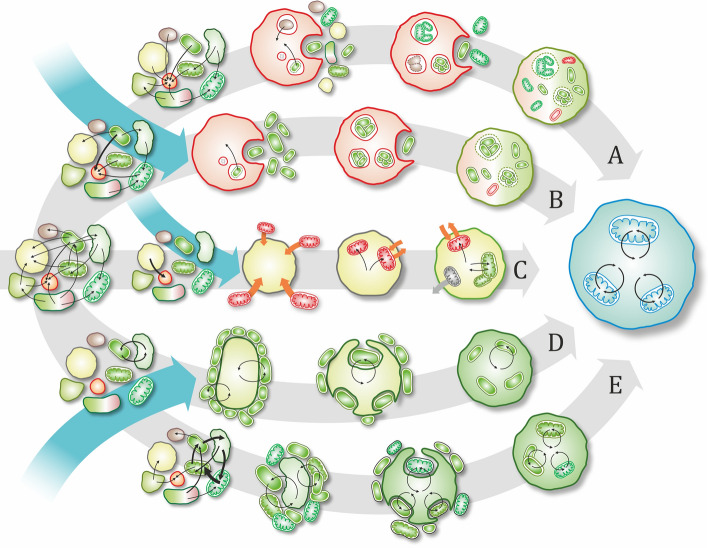Fig. 2.
Hypothetical evolutionary scenarios of prokaryotic endosymbiosis. The sign of the partner in the ecological interaction is indicated by the cell color: green is beneficial toward the partner, red is exploitative, and yellow is neutral. The blue cell indicates a fully integrated symbiont species within the host cell, a new evolutionary unit. The interaction either starts in a dense multi-species biofilm where there is a network of various interactions among species (gray arrows) or as a pairwise interaction of two free-living species (blue arrows). A, B: Initial interaction is exploitative as the host feeds on the partner species (this could happen by assuming phagotrophy or external digestion). If the symbiont can maintain its population internally against host culling, there is a chance for coevolution and endosymbiosis. If the original interaction is non-specific, host is expected to maintain a diverse internal population (A). Exploitation can also emerge as a specific pairwise interaction either in the biofilm or of free-living forms (B). Resulting symbionts could defect due to mutations (red symbionts). C: If symbiont is the exploitative partner (a parasite), its entry into the host does not depend on the host's ability to phagocytose. A prolonged interaction could lead to temperated parasite costs, and, ultimately, to a tamed parasite (green symbiont) that stays with the host. D, E: Initial interaction is mutually beneficial, e.g., syntrophy. Partners can be specific and strictly pairwise (D) or work together as a multi-species network to utilize resources (E). In case endosymbiosis emerges from a non-specific network of interactions of multiple species, one expects the resulting integrated pair has greater symbiont, organelle, or genetic diversity (especially in case of nucleated eukaryotes)

